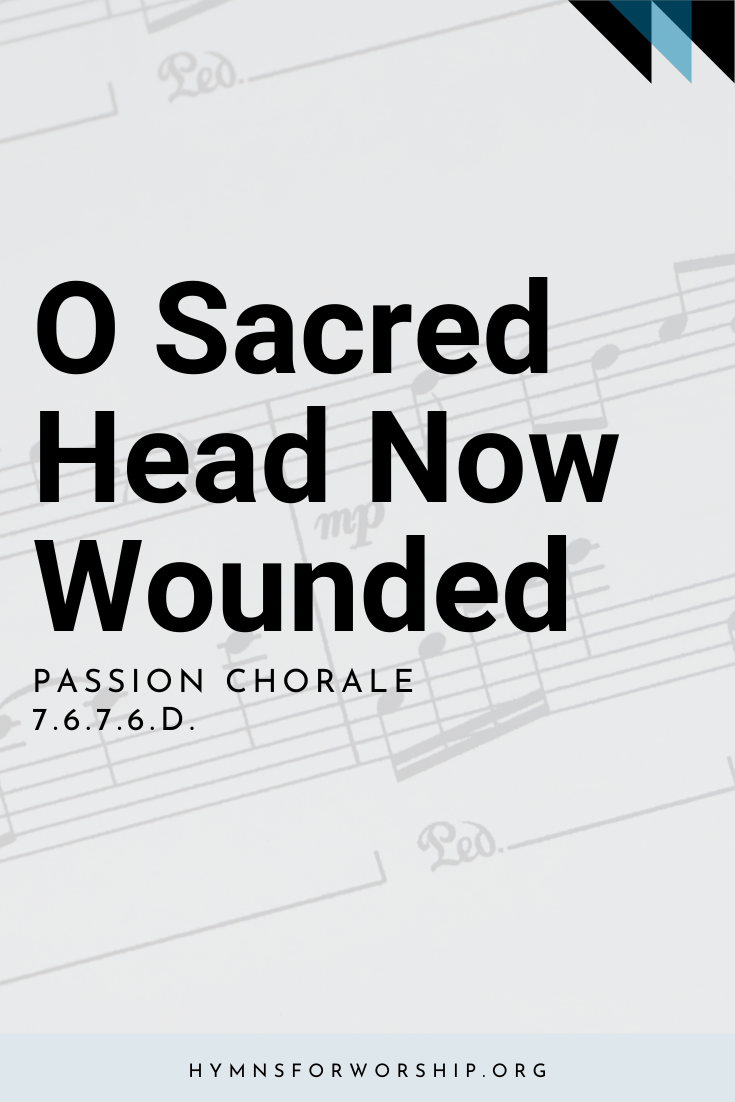JESUS CHRIST >> SUFFERINGS & DEATH
SDAH 156
O sacred Head, now wounded,
with grief and shame weighed down,
now scornfully surounded
with thorns, thine only crown:


Get the hymn sheet in other keys here
For Worship Leaders
Make each hymn more meaningful with these helpful tools: Short, ready-to-use hymn introductions for church bulletins, multiple ways to introduce a hymn based on your worship theme and in-depth history and insights to enrich your song service.


Text
1
O sacred Head, now wounded,
with grief and shame weighed down,
now scornfully surounded
with thorns, thine only crown:
how pale thou art with anguish,
with sore abuse and scorn!
How does that visage languish
which once was bright as morn!
2
What thou, my Lord, has suffered
was all for sinners’ gain;
mine, mine was the transgression,
but thine the deadly pain.
Lo, here I fall, my Savior!
‘Tis I deserve thy place;
look on me with thy favor,
vouchsafe to me thy grace.
3
What language shall I borrow
to thank thee, dearest friend,
for this thy dying sorrow,
thy pity without end?
O make me thine forever;
and should I fainting be,
Lord, let me never, never
outlive my love for thee.

Hymn Info
Biblical Reference
(a) Matt 27:29
Author
Attr. to Bernard of Clairvaux (1091-1153)
Translator
Tr. (German) by Paul Gerhardt, 1656 (1607-1676); Tr. (English) by James W. Alexander, 1830 (1804-1859)
Hymn Tune
PASSION CHORALE
Metrical Number
7.6.7.6.D.
Composer
Hans Leo Hassler (1564-1612)
Arranged
J.S. Bach, 1729 (1685-1750)
Year Composed
1601
Theme
SUFFERINGS AND DEATH OF JESUS CHRIST
Watch
The general idea when it comes to hymns is that there is a close bond between the author and the composer. That the author writes a hymn and the composer invents a tune to suit it, and then provides the harmony to accompany the tune. However, such wasn’t always the case.
Many hymns actually worked vice versa wherein authors would write verses according to existing tunes. Hundreds of hymns are sung from borrowed tunes, such as secular songs, chants, and even classical works. That being said, I went ahead and researched which hymns in the SDA Hymnal were originally classical works.

Notes
Make each hymn more meaningful with these helpful tools: Short, ready-to-use hymn introductions for church bulletins, multiple ways to introduce a hymn based on your worship theme and in-depth history and insights to enrich your song service.





